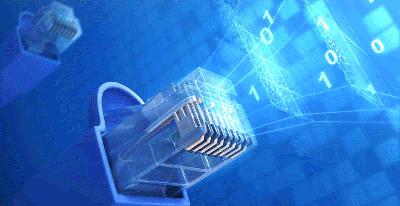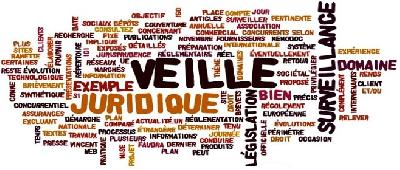Securing personal data on a computer
Article published on:
Introduction
We will see in this short tutorial how to secure your work environment in order to secure as much as possible his personal data. For this we will base ourselves on the environment Windows. The examples of this given below, as well as the screenshots were made on Windows 10, however these instructions work very well on Windows 7 or Windows 8.
Namely, the security of our data on this principle can also be done on most of them of the systems operating systems such as Linux and MacOS. However, the procedures may be a little different.
Security when installing an OS
 We will start installing our operating system. When starting the
the installation you have your computer
which displays the screen shown opposite :
We will start installing our operating system. When starting the
the installation you have your computer
which displays the screen shown opposite :
 After a few moments you must enter your system activation license,
then you must accept the conditions of its use. This is the display on the right:
After a few moments you must enter your system activation license,
then you must accept the conditions of its use. This is the display on the right:
Please note, if you reinstall your operating system, you may need to
do not have to enter your activation key.
Then you have a pop-up window that offers you two possible choices, you
have the choice between the default installation
and custom installation. We will do the custom installation here to take care of
disk space. We will opt for a partitioning
of disc. This will allow us to preserve and distinguish our data from that of the system
of exploitation (bone). In other words, if we have a problem
with our operating system we can reinstall it comfortably without fear of
loss of data since it will have been stored on a part
different and independent of the Windows domain.

Here is the configuration I made with a hard disk (the type of disk HDD or SSD we
is important for this) of 100 GB.
Indeed, I created three different partitions, one reserved for the system and another one that will be used for our important files. Once we have finished our organization within the disk we will finish the installation. The next steps are quite simple, it is the configuration of the windows system.
Configuration once the OS is installed
 When we go to the computer or this PC we
can select the disc of our choice. After selecting it we can manage it
from the storage manager. To do this, we will
you must click on "manage" in the Computer tab as shown in the screenshot
opposite.
When we go to the computer or this PC we
can select the disc of our choice. After selecting it we can manage it
from the storage manager. To do this, we will
you must click on "manage" in the Computer tab as shown in the screenshot
opposite.
 After that we notice our different discs of our PC.
If we have not followed the installation of the custom OS we can redefine the size
volume but also create new ones
readers on unused spaces in order to obtain several partitions within the same
disc.
This is our main disk which is not fully partitioned:
After that we notice our different discs of our PC.
If we have not followed the installation of the custom OS we can redefine the size
volume but also create new ones
readers on unused spaces in order to obtain several partitions within the same
disc.
This is our main disk which is not fully partitioned:
Namely, the main disk is still called disk 0 and we can only create
four separate scores in main volume.
Disk 0 contains the parts that are reserved for the system and the OS that we cannot
not modify except for the change of their volume
of storage. To add spaces or modify their volume, just click on
one of the volumes and then click on reduce. For in
add one, we just need to right-click on an unallocated part and then click on
new simple volume, then to define it as one
wishes it.
Here I called my partition D: data. You can choose the one you want.
Personal data management
Once we have finished splitting the main disk as we wish, we can change
the location of our documents and the location
of the office registration. To do this we must right-click in the accesses
quick/library to access properties and
change the location.
Here is how to change the location of our office, it works
also in the same way with my documents,
my images, right-click, location. In the location you must enter the
complete path to reach the destination
final, here is an example: D:\users\test\documents.
First of all I advise you to create a directory with the user's name, then to
within it to create several
subdirectories named as follows: Office, Documents (my documents) appointment
may differ, but the simplest is
to keep the default name. Here's what you need to get :

Afterwards, you can test and create a new document or folder in one of the folders
created on your disk: D and you create it
will appear on the desktop, for example, if you have put it in the Desktop subdirectory.
You can also automate this task for future users who will be created on
this computer. For that it is necessary to go
in the start menu and search for the tool regedit in the search bar. Afterwards
you must go to the directory
ProfileList, here is his address to access it: HKEY_LOCAL_MACHINE\SOFTWARE\Microsoft\Windows
NT\CurrentVersion\ProfileList.
When you arrive at this directory, you must change the default destination of the
user directory in ProfilesDirectory.
To do this, simply double click on it and enter the new path by
Failing this, for example: D:\users.
Now you have to restart the computer. Each time a user is added, you
You will notice that his personal directory is located
in the partition D: that you have created.
To go further
Software locations
You also have the possibility to do what I have done, for optimal comfort and no change in your OS due to third party software to create another partition on your disk, and you can name it "software" for example, and during installation of the next software to redirect them to this disk drive. Like that if you are infected by a virus, it does not affect any part of your operating system. Knowing that our data are on a separate part it cannot have access to it. This then creates the the first virtual defense barriers of your computer.
Synchronization of our data on various devices
Hubic's proposal
You have the possibility to use a synchronization software such as Hubic proposed by
OVH to retrieve its files in real time
on any computer either through a browser or by a computer
configured with the Hubic application.
This can allow us to modify a document on a PC and find it in the same state
on another configured device. Namely,
synchronization is done only through an internet connection. However, it does not
is possible to modify its directory and
its files even offline and they will be synchronized again with the changes
brought with you the next time you connect to the Internet.
The benefits:
- This allows us to find our data wherever we are.
- Low chance of losing our data.
- Easy to configure.
- Automatic synchronization.
- French software.
The disadvantages:
- Load of free storage space on the net.
- The reliability of the system.
- The conditions of use.
- We do not know where our data are physically stored except on our equipment (at OVH). Indeed, they are also stored on a server from OVH since Hubic is a service from OVH, and our data for better synchronization are also synchronized at the software operator.
Nas
You also have the possibility to create your own synchronization service by using a NAS storage server at home. This allows you to have full control of your data.
The benefits :
- Easy to use.
- Access to the NAS via the local network even offline.
- Accessible from anywhere via an internet connection.
The disadvantages :
- Purchase price.
- Requires the presence of a network.
- Requires a good internet connection to access it from any location.
My different projects
Portfolio



